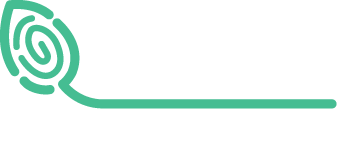
Combatting Climate Change Starts with Net Zero Carbon
In the effort to fight global warming, cutting carbon should be at the top of the fashion industry’s to-do list.
Going beyond reducing their carbon footprints, many companies have long-term goals of reaching net zero carbon operations. At Lenzing, we are working toward carbon neutrality by 2050. But ahead of that target, we are doing our part with the introduction of carbon-zero TENCEL™ branded fibers.
For this new product within the portfolio of TENCEL™ branded fibers, Lenzing first lowered the carbon footprint by 65 to 80 percent compared to conventional lyocell and modal fibers. What cannot be eliminated is offset to reach net zero.
Rather than being a replacement for sustainable development, offsets make up the difference. “Insetting or reduction is the ultimate solution, and offsetting should just be the icing on the cake that’s necessary,” said Florian Heubrandner from Lenzing.
To kick off the launch, Lenzing hosted a webinar on Sept. 22 during Climate Week NYC. Even in a year when a lot of activity came to a halt, the planet reached record greenhouse gas figures, pointing out the continued need for action.
“Consistent solutions to reduce emissions need to be found and put in place,” said Annemarie Hou from the UN Office for Partnerships “We need new technologies, and we need to reset our consumption patterns at all levels across all sectors. As the science sets out clearly, we must decarbonize the global economy by 2050…and that shift has already started.”
Outside of the environmental need for initiatives around climate change, there is also an economic consideration. Moderator Kerry Bannigan from SDG Media Zone pointed to a United Nations projection that efforts toward Sustainable Development Goal 13: Climate Action could bring an economic boost of $26 trillion globally.
“I’d like to recognize Lenzing for their leadership and collaboration to achieve the global goals, and particularly their investments in reducing CO2 emissions,” Annemarie said.
As a raw material supplier, our work on lowering the impact of our fibers also has an effect on brand partners, including Allbirds.
Measuring, reducing and offsetting carbon is a key focus at Allbirds. “While we track several different environmental metrics, our top three climate priorities are carbon, carbon and carbon,” said Jad Finck from Allbirds. He added that offsetting down to zero should become “table stakes” for brands, rather than a “differentiator.”
This also extends to how the brand communicates with its customers. As part of its transparency push, the label displays the carbon footprint for each product it makes, much like a food brand would publish a nutrition label.
After doing a lifecycle analysis, Allbirds realized that materials and production are the two main areas of carbon impact. Sourcing more sustainable inputs has therefore been a priority for the brand. Allbirds began with shoes in Merino wool, but as the direct-to-consumer brand looked to expand beyond this material, it landed on TENCEL™ Lyocell. Dubbed the Tree line, the eucalyptus-derived material delivers on both sustainability and style.
“We’re always trying to combine what people want to do with what they should do and have them be the same thing, and then that’s really powerful,” said Jad. “For instance, with the Tree shoes and the TENCEL™ Lyocell, the fundamental key sustainable material in that shoe also makes it light and breezy, it’s got that beautiful cooling sensation, it’s got a great aesthetic, that slightly silky texture, it’s why people love the shoe, whether or not they know how sustainable it is to begin with.”
Part of what will help push advances in sustainable materials is collaboration and scale, since having more customers raises the volume for raw material creators.
“So much of this work we don’t need to do alone. And I think it’s great that a lot of companies have set out on their own initiatives early on, but if we are sharing materials, if we are sharing suppliers—which we are as an industry—then this is the time to really look at where efficiencies and speed can be applied,” said Lewis Perkins from the Apparel Impact Institute. “So when it makes sense, let’s approach these in collective action.”
Watch the full webinar:






